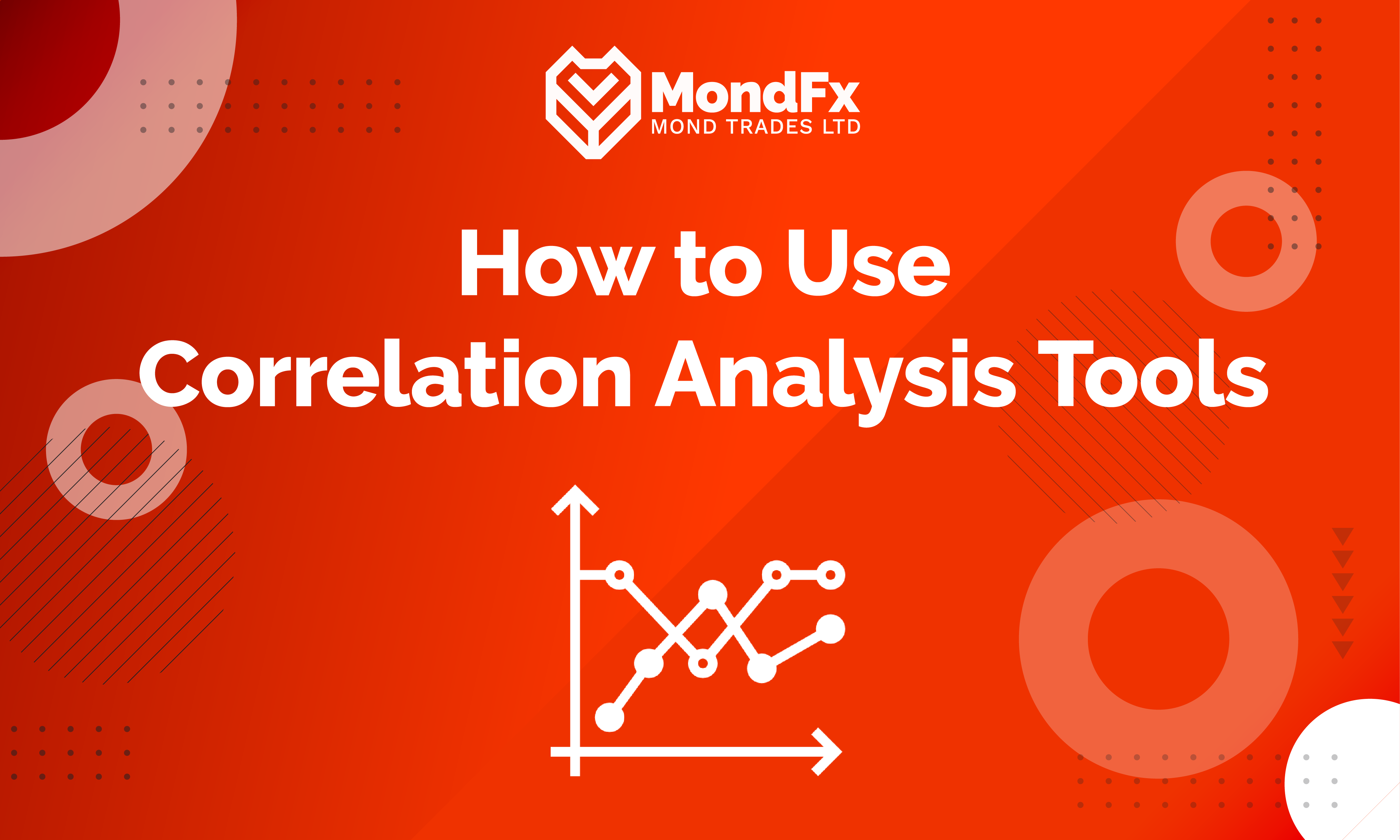In today’s financial markets, understanding the relationships between different assets is of paramount importance. Correlation analysis, as a key tool in this domain, enables investors and traders to uncover hidden patterns in market movements. This article aims to provide a comprehensive overview of how to use correlation analysis tools, exploring fundamental concepts, advanced techniques, and practical applications of this method in trading strategies and risk management. By studying this article, readers will learn how to leverage correlation analysis to make more informed decisions and enhance their investment performance.
Definition of Correlation and Its Importance in Market Analysis
In financial markets, the relationship between assets plays a crucial role in investment decisions and risk management. Correlation, as a key tool in market analysis, enables investors and traders to understand how different assets respond to market changes.
Definition of Correlation
Correlation simply refers to the degree of relationship between two or more variables. In financial markets, these variables are usually the prices of assets such as stocks, currencies, and commodities. Correlation is expressed as a numerical coefficient ranging from -1 to 1:
- Positive Correlation: When two assets move in the same direction simultaneously. A coefficient close to 1 indicates a strong positive correlation.
- Negative Correlation: When two assets move in opposite directions. A coefficient close to -1 signifies a strong negative correlation.
- Neutral or Zero Correlation: When the movement of one asset has no impact on another.
Understanding these relationships is essential for optimizing portfolio diversification, enhancing risk management strategies, and making informed trading decisions.
Importance of Correlation in Market Analysis
Using correlation analysis can help investors and traders gain a better understanding of the relationships between assets. This information can be utilized for various strategies.
Risk Management and Diversification: By identifying assets with low or negative correlation, investors can adjust their portfolios to reduce risk. This strategy ensures that if the value of one asset decreases, losses may be offset by the increase in value of another asset.
Identifying Trading Opportunities: Correlation helps traders predict potential market movements. For example, if two currency pairs have historically shown positive correlation and one begins to rise, the other may soon follow.
Hedging: Using assets with negative correlation can serve as a hedging tool. This is especially useful in volatile markets where investors want to protect against potential losses.
Better Investment Decision-Making: Correlation analysis enables investors to understand the interdependencies between assets, allowing them to make more informed decisions.
Challenges of Using Correlation
Despite its many advantages, correlation analysis comes with its own set of challenges. Correlations can change over time and be influenced by various factors such as economic shifts and geopolitical events. Additionally, an overreliance on historical data may lead investors to overlook short-term volatility and structural changes in the market.
As a powerful tool in market analysis, correlation helps investors understand the complex relationships between assets and adopt more effective strategies for risk management and return enhancement. However, having a precise understanding of its limitations and challenges is essential for fully leveraging this tool. By conducting thorough analyses and using correlation wisely, investors can make better decisions in dynamic and unstable market environments.
Types of Correlation
Positive Correlation
Positive correlation occurs when two assets or variables move in the same direction simultaneously. This type of correlation in financial markets indicates that when the price of one asset increases, the price of the other asset tends to rise as well, and vice versa. For example, the currency pairs EUR/USD and GBP/USD often exhibit a positive correlation, as both are influenced by the value of the US dollar.
Applications:
- Trend Confirmation: When assets are positively correlated, they can be used to confirm market movements. If one asset is rising and the other moves in the same direction, it likely indicates a stronger trend.
- Diversification: Investing in positively correlated assets can enhance returns, but it’s essential to be aware of the shared risks.
Negative Correlation
Negative correlation occurs when two assets move in opposite directions. This means that when the price of one asset increases, the price of the other asset decreases. A common example of this is the currency pairs USD/JPY and EUR/USD, which often exhibit a negative correlation.
Applications:
Hedging
Investors can reduce risk by using assets with negative correlation. If one asset is declining in value, the other may compensate for this loss.
Diversification
Incorporating negatively correlated assets in a portfolio can help reduce overall volatility and prevent significant losses.
Neutral Correlation
Neutral or zero correlation occurs when two assets have no discernible relationship with each other. In this case, the price movement of one asset does not affect the other. Assets with neutral correlation operate independently.
Applications:
Diversification Strategies: In a portfolio, assets with neutral correlation can help reduce risk, as the performance of one does not impact the other.
Identifying Independent Opportunities: Traders can use assets with neutral correlation to pursue independent opportunities.
Analysis and Application in the Market
Understanding the types of correlation helps analysts and investors make better decisions. Both positive and negative correlations can be effective in risk management and portfolio optimization, while neutral correlation can aid in diversification.
For example, in a bullish market, investors may seek positively correlated assets to capitalize on strong trends. Conversely, in unstable conditions, they might turn to negatively correlated assets to mitigate risk.

Challenges and Limitations
Although correlation analysis is a powerful tool, it is not without challenges. Correlations can change over time and be influenced by economic and political factors. Additionally, a heavy reliance on historical data may lead investors to overlook short-term volatility and structural changes.
Ultimately, a thorough understanding of correlation types can help investors and traders improve their strategies and act more intelligently in financial markets. By accurately analyzing and applying these concepts, they can optimize their portfolios and reduce risk.
Measuring Correlation
Correlation Coefficient: Definition and Interpretation
The correlation coefficient is a numerical indicator that measures the strength and direction of the relationship between two variables. This coefficient ranges from -1 to 1:
Coefficient of 1: Indicates a perfect positive correlation. This means that as one variable increases, the other variable also increases proportionally.
Coefficient of -1: Indicates a perfect negative correlation. This means that as one variable increases, the other variable decreases proportionally.
Coefficient of 0: Indicates no correlation. This means that there is no linear relationship between the two variables.
The correlation coefficient helps traders and analysts understand the relationships between assets, leading to better decision-making. It can provide insights into market dynamics and assist in identifying trading opportunities and managing risk.
Using Statistical Software and Computational Tools
Various methods can be employed to calculate the correlation coefficient. One of the most commonly used methods is leveraging statistical software and computational tools, which allow analysts to measure correlations quickly and accurately. These tools can streamline the process of data analysis, enabling users to focus on interpreting results and making informed decisions. Statistical Software
Software such as SPSS, R, and Python with various statistical libraries provide powerful tools for data analysis and calculating correlation coefficients. These applications can process large volumes of data and accurately compute correlations between variables.
SPSS: Known for its user-friendly interface, SPSS is suitable for both beginners and professionals, offering extensive capabilities for statistical analysis.
R: This statistical programming language is ideal for complex analyses due to its advanced features and active user community, making it a favorite among statisticians and data scientists.
Python: With libraries like Pandas and NumPy, Python provides excellent tools for calculating correlations and performing data analysis. Its versatility and ease of integration with other systems make it a popular choice among data analysts.
Computational Tools
In addition to statistical software, computational tools like Excel can also be used to calculate correlation coefficients. Excel provides quick and visual data analysis capabilities with its computational and charting features.
Excel: By using the CORREL function, users can easily compute the correlation coefficient between two datasets. It also offers the ability to create charts and visually analyze data, making it a practical tool for quick assessments and presentations.
Advantages and Limitations
Using statistical software and computational tools to measure correlation offers numerous benefits. These tools enhance the accuracy and speed of calculations and enable the analysis of complex data. However, the interpretation of results still relies on the knowledge and experience of the user and must be conducted carefully.
Measuring correlation using coefficients and computational tools is a powerful means for analyzing the relationships between assets in financial markets. By employing these methods, investors and analysts can make more informed decisions and design more effective strategies for risk management and capitalizing on market opportunities.
Practical Applications of Correlation in Trading
Trend Confirmation with Positive Correlation
In financial trading, one of the main applications of positive correlation is trend confirmation. When two assets move together with a positive correlation, an increase or decrease in the price of one can serve as confirmation of a similar movement in the other. For example, if the currency pairs EUR/USD and GBP/USD are both rising, this could indicate a strong upward trend in the forex market. Traders observing this correlation can enter trades with greater confidence and take advantage of stronger trends. This confirmation is particularly useful in volatile markets, where identifying trends can be challenging.

Risk Management and Hedging with Negative Correlation
Negative correlation serves as a powerful tool for risk management and hedging. When two assets exhibit negative correlation, their price changes move in opposite directions. This characteristic allows traders to reduce their risk by investing in assets that move inversely. For instance, if you have an investment in a specific stock that tends to decrease when gold prices rise, you can hedge against potential losses in the stock by investing in gold. This strategy is effective during unstable times, as it can help prevent significant losses and contribute to portfolio stability.
Diversification Strategies Using Low Correlation
One important method for reducing overall portfolio risk is employing diversification strategies with low correlation. When assets have low correlation with one another, the volatility of one does not significantly impact the other. This allows investors to combine various assets to lower the overall risk of the portfolio. For example, a mix of stocks, bonds, and commodities in a portfolio can help reduce volatility, as these assets typically have low correlation with each other. This strategy is especially beneficial for long-term investors seeking stability and risk reduction.
Using correlation analysis in trading can significantly enhance investment performance and mitigate risk. By confirming trends through positive correlation, traders can enter trades with greater confidence. Negative correlation serves as a suitable tool for hedging and minimizing potential losses. Additionally, leveraging diversification strategies and low correlation can minimize portfolio volatility and improve returns.
However, it is essential for traders to recognize that correlations can change over time and be influenced by various factors, including economic and political changes. Therefore, continuous monitoring and updating of analyses are crucial to maintaining the effectiveness of correlation-based strategies. Ultimately, understanding and correctly utilizing correlation helps investors make more informed decisions and capitalize on available market opportunities.
Tools for Correlation Analysis
One of the powerful tools in correlation analysis is the correlation matrix. This matrix is presented as a table that displays the correlation coefficients between different pairs of assets. Each cell in this matrix indicates the magnitude and direction of the correlation between two assets. This tool allows analysts to quickly examine relationships among multiple assets and identify correlation patterns.
Advantages:
Visual and Understandable: The correlation matrix is displayed graphically, making it easy to see relationships between assets.
Quick Comparison: It enables simultaneous comparison of several assets and the identification of strong or weak correlations.
Applications:
Identifying Trading Opportunities: By observing strong or weak correlations, suitable trading strategies can be developed.
Risk Management: Identifying negatively correlated assets for hedging and portfolio diversification.
Using Trading Platforms like TickTrader
Modern trading platforms such as TickTrader offer advanced tools and capabilities for correlation analysis. These platforms enable traders to easily and quickly calculate and analyze correlations between various assets.
Features of TickTrader:
Live Correlation Display: Provides real-time, updated correlation data, allowing traders to stay aligned with rapid market changes.
Advanced Graphical Tools: Interactive charts and graphs for better analysis and pattern recognition.
Customization Capabilities: Traders can adjust various parameters and customize their analyses based on specific needs.
Advantages of Using Trading Platforms:
Access to Extensive Data: Offers comprehensive and up-to-date information from various markets.
Speed and Accuracy: Enables quick and accurate correlation calculations and analyses.
Integration with Other Trading Tools: Trading platforms often integrate with other tools, such as technical and fundamental analysis, enhancing the comprehensiveness of analyses.
Correlation analysis tools like correlation matrices and trading platforms such as TickTrader empower traders to efficiently and accurately analyze complex relationships between assets. These tools are particularly useful in dynamic and volatile markets, where quick and informed decision-making is crucial.
By utilizing these tools, traders can create more effective strategies for risk management, identify trading opportunities, and optimize their portfolios. However, it is essential to always act with caution and awareness of market changes and correlations to make the best use of these tools.
Factors Influencing Correlation
Economic Indicators
Economic indicators play a fundamental role in determining the correlation between assets. These indicators include data such as interest rates, Gross Domestic Product (GDP), unemployment rates, and inflation. Changes in these indicators can impact currencies, stocks, and commodities, thereby altering their correlations.
Interest Rates: Increases or decreases in interest rates can affect capital flows, causing changes in interest rates to strengthen or weaken currencies, which in turn can alter the correlation between different currency pairs.
Inflation: High inflation rates may lead to increased interest rates, which can impact stock and bond markets.
GDP and Unemployment: Strong economic data can enhance investor confidence and bolster the stock market, resulting in positive correlations with other assets.
Geopolitical Events
Geopolitical events such as wars, sanctions, elections, and government changes can create significant volatility in financial markets and impact asset correlations.
Wars and Conflicts: These events can lead to sharp fluctuations in the prices of commodities, especially oil and gold, altering the correlation between these commodities and related currencies.
Sanctions: Imposing sanctions on a country can affect the value of its currency, leading to changes in correlations among global currencies.
Elections: Election outcomes can change economic and trade policies, which can subsequently impact financial markets and asset correlations.
Market Sentiment
Market sentiment, or investor psychology, is another factor that affects asset correlations. Positive or negative sentiments can lead to significant market volatility and alter the correlations between assets.
Optimism and Pessimism: During periods of optimism, investors tend to buy riskier assets such as stocks, which can create a positive correlation with other assets. Conversely, during periods of pessimism, investors move towards safer assets like gold, potentially generating a negative correlation between these assets and the stock market.
Panic and Euphoria: Sudden and unexpected events can trigger extreme reactions in the market, further impacting asset correlations.
Various factors, including economic indicators, geopolitical events, and market sentiment, can influence correlations between assets. Understanding these factors and how they affect asset correlations can help investors and traders develop more effective strategies for managing risk and capitalizing on market opportunities.
By closely monitoring these factors and analyzing changes in correlations, investors can make more informed decisions and leverage market volatility to their advantage. However, it remains essential to update these analyses continuously in light of ongoing market changes to ensure the effectiveness of strategies.
Risk Management in Correlation-Based Strategies
Using Stop-Loss Orders
The use of stop-loss orders is a key tool in risk management. These orders allow traders to limit potential losses and prevent significant downturns. In correlation-based strategies, stop-losses can effectively manage market volatility and protect capital.
Setting Stop-Loss Levels: Traders should determine stop-loss levels based on correlation analysis and market volatility. For example, if two assets are positively correlated, the stop-loss can be set to prevent further losses when the price of one asset declines.
Preventing Sudden Losses: In volatile markets, stop-loss orders can act as a safety net, helping to avert unexpected losses.
Optimizing Profit: By employing trailing stop-losses, traders can maximize their profits as prices move favorably while simultaneously protecting against losses.
These strategies help ensure that traders can navigate the complexities of the market while minimizing risks associated with their positions.
Position Size Management
Position size management is another crucial aspect of risk management. In correlation-based strategies, determining the appropriate size for each position can help reduce overall risk and increase portfolio stability.
Correlation Analysis: By conducting a thorough analysis of the correlation between assets, traders can adjust position sizes based on the level of correlation. For assets with high correlation, it may be necessary to reduce position size to prevent increased risk.
Diversification: By appropriately allocating capital to different assets and managing position sizes, risk can be distributed, preventing excessive concentration in any single asset.
Using Risk Management Formulas: Formulas such as fixed percentage of capital can aid in determining the appropriate position size. These approaches allow traders to invest according to their personal risk tolerance.
By effectively managing position sizes, traders can better navigate market volatility and enhance the resilience of their portfolios.

Combining Two Approaches
Combining the use of stop-loss orders and position size management can effectively control risk in correlation-based strategies. This integration allows traders to ensure their portfolios are adequately protected against sudden market changes.
Simultaneous Use of Stop-Loss and Position Management: By setting appropriate stop-loss levels and adjusting position sizes, traders can prevent excessive losses and maximize potential profits.
Continuous Monitoring and Updating: Markets and correlations constantly evolve. Therefore, traders must keep their strategies up to date and adjust settings based on current market conditions.
Risk management in correlation-based strategies requires the smart use of various tools, such as stop-loss orders and position size management. By combining these tools and conducting thorough correlation analysis, traders can effectively reduce their risk and achieve their investment goals.
Ultimately, success in financial markets relies on the ability to manage risk and adapt to changing market conditions. Utilizing correlation-based strategies alongside effective risk management techniques can help investors make better decisions in dynamic and volatile market environments, leading to more favorable outcomes.
Case Studies and Practical Examples
Examples of Successful Trades Using Correlation Analysis
Correlation analysis in financial markets allows traders to make better decisions by understanding the relationships between assets. Here are a few examples of successful trades utilizing this analysis:
Currency Pair Trading: In a market where the currency pairs EUR/USD and GBP/USD have a positive correlation, a trader observes an increase in the price of EUR/USD and decides to open a buy position in GBP/USD as well. With the success of this trade and the price increase of both currency pairs, the trader earns a significant profit.
Hedging Risk with Gold and the Stock Market: During a period of negative correlation between gold and the S&P 500 index, an investor managed to offset losses in their stock portfolio by buying gold as stock values declined. This strategy reduced overall portfolio volatility and preserved capital value.
Utilizing Correlation in Commodity Markets: A trader analyzed the relationship between oil prices and the Canadian dollar (CAD) and decided to buy CAD as oil prices rose. This analysis, based on the positive correlation between the two assets, resulted in profitability.
Summary of the Benefits of Using Correlation in Market Analysis
Utilizing correlation analysis in financial markets offers several advantages that can help traders and investors improve performance and manage risk:
Enhanced Decision-Making: By understanding how assets are related, traders can make more informed decisions and capitalize on available market opportunities.
Effective Risk Management: Correlations help investors identify risks associated with different assets and reduce losses through hedging strategies.
Portfolio Diversification: By identifying assets with low correlation to each other, a diverse portfolio can be constructed, leading to reduced overall risk and increased financial stability. Identifying Trends: Positive correlation between assets can signal strong market trends that traders can capitalize on.
Ultimately, correlation analysis is one of the fundamental and effective tools in financial market analysis. By using this tool, investors can not only manage risk more effectively but also take full advantage of market opportunities. However, it is essential that correlation analysis is conducted alongside other analytical tools and considers the ongoing market changes to achieve optimal results.
Conclusion
Correlation analysis is a powerful and essential tool in financial markets that allows traders and investors to understand the complex relationships between assets and adopt more effective strategies for risk management and return enhancement. By utilizing tools such as correlation matrices and advanced trading platforms, investors can benefit from various advantages, including improved decision-making, effective risk management, and better portfolio diversification. However, it is crucial to continuously pay attention to ongoing market changes and the factors influencing correlation, keeping analyses updated. A correct understanding and intelligent use of correlation analysis, combined with other analytical tools and risk management techniques, can lead to greater success in the complex and dynamic environments of financial markets.



